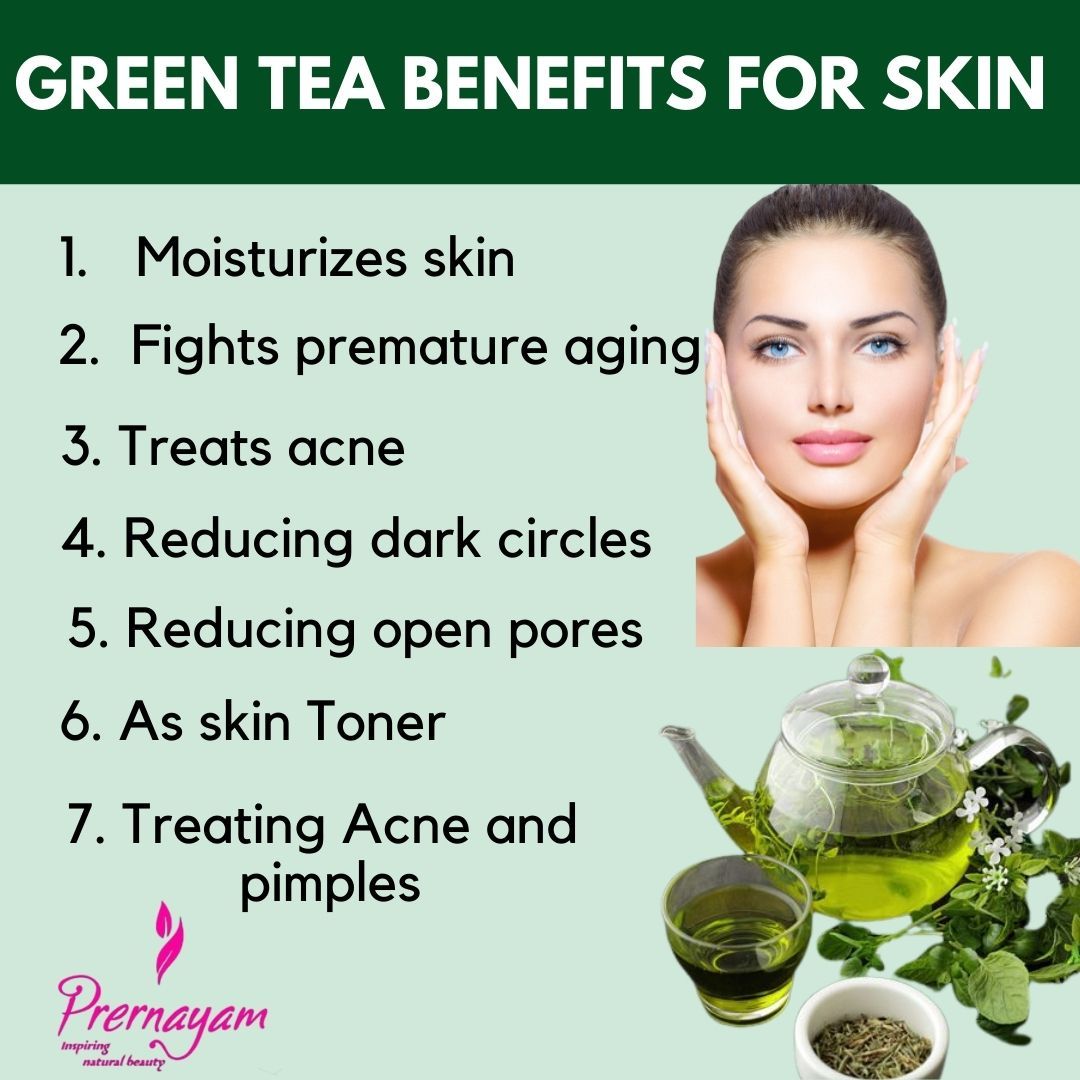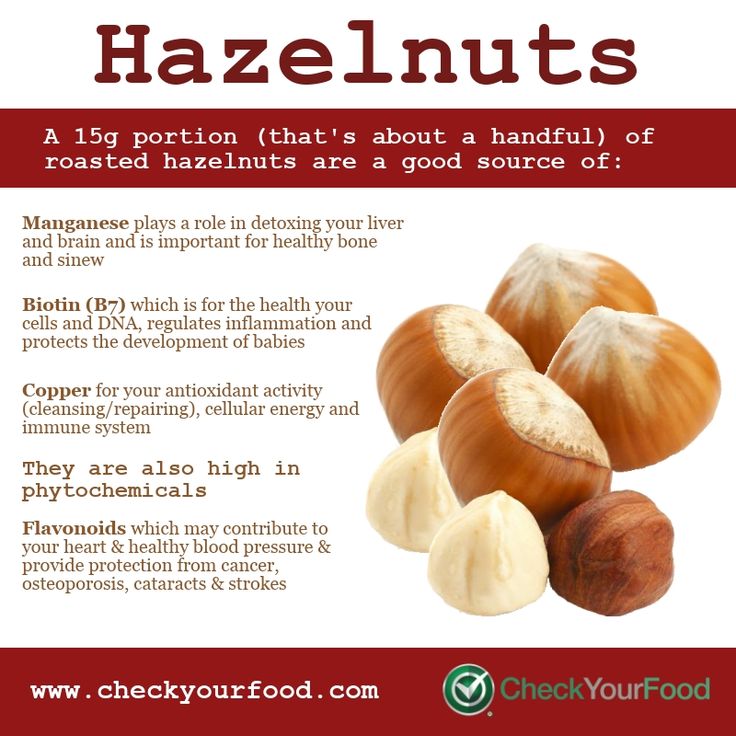Clear Skin, Brighter Future: Green Tea’s Unsung Benefits for Your Complexion
The quest for clear, radiant skin is as ancient as humanity itself. From elaborate rituals in bygone empires to the dizzying array of serums and treatments crowding modern vanity tables, we have perpetually sought the elixir that promises to unveil our most luminous selves. In this relentless pursuit, we often overlook the humble, yet profoundly powerful, solutions that have stood the test of time. One such marvel, steeped in history and brimming with scientific validation, is green tea – a beverage synonymous with wellness, yet whose profound dermatological benefits often remain an unsung symphony.
Imagine a journey that begins not in a sterile laboratory, but in the verdant, mist-shrouded mountains of ancient China. A story unfolds, one that intertwines tradition, science, and the timeless yearning for vitality. Green tea, Camellia sinensis, is more than just a refreshing brew; it is a complex tapestry of bioactive compounds, each playing a crucial role in fostering health, both internally and externally. For the knowledgeable seeker of true skin wellness, understanding green tea’s multifaceted contributions is not merely an exercise in botanical appreciation, but an illumination of a holistic pathway to a brighter, clearer future.
I. A Timeless Elixir: Green Tea’s Journey Through History and Culture
Our story begins over 5,000 years ago in the foothills of the Himalayas, where legend has it that Emperor Shen Nung, the Divine Farmer, accidentally discovered tea when leaves from a wild tree drifted into his boiling water. He found the resulting infusion invigorating and restorative. While black tea emerged later through fermentation, green tea, in its minimally processed form, represents the original essence of this discovery. Its journey from an accidental brew to a revered elixir is a testament to its intrinsic power.
From China, tea’s wisdom spread like a gentle breeze across Asia. Buddhist monks carried its seeds and cultivation practices to Japan in the 9th century, transforming it into an integral part of their spiritual and medicinal practices. In Japan, green tea evolved into highly refined forms like Matcha, Sencha, and Gyokuro, each associated with specific rituals, aesthetics, and health benefits. Korean tea culture, too, embraced green tea, integrating it into daily life and traditional medicine. Across these diverse cultures, tea was revered not just as a beverage, but as a medicine, a meditation aid, and a symbol of hospitality and refinement.
Ancient texts and anecdotal evidence from these cultures often spoke of tea’s ability to promote longevity, enhance mental clarity, and maintain physical vigor. Within this broader understanding of well-being, observations of its impact on skin were undoubtedly present, though perhaps not articulated with modern dermatological precision. Monks, known for their disciplined lives and regular tea consumption, were often noted for their clear, unblemished complexions, suggesting an early, intuitive connection between green tea and skin health. It was understood that what nourished the body from within would inevitably reflect on the outward appearance.
This rich historical tapestry forms the bedrock upon which modern science has built its understanding. The transition from traditional wisdom to rigorous scientific inquiry has allowed us to peel back the layers of mystique and unveil the precise biochemical mechanisms that make green tea a powerhouse for complexion health. Its journey from ancient fields to modern laboratories is a compelling narrative of discovery, validating centuries of intuitive practice with empirical evidence.
II. The Science Behind the Glow: Unpacking Green Tea’s Bioactive Arsenal
To truly appreciate green tea’s dermatological prowess, one must delve into its intricate biochemistry. Unlike black tea, which undergoes significant oxidation, green tea leaves are steamed or pan-fired shortly after harvesting, preserving a higher concentration of its most potent compounds. This minimal processing is key to its unique therapeutic profile.
The stars of green tea’s show are undoubtedly the catechins, a class of polyphenols. Among these, Epigallocatechin gallate (EGCG) stands as the undisputed MVP, often constituting over 50% of the total catechins. But it’s not alone; other significant catechins include Epigallocatechin (EGC), Epicatechin gallate (ECG), and Epicatechin (EC). These catechins are remarkable for their multi-faceted actions:
-
Antioxidant Powerhouses: EGCG, in particular, is a formidable antioxidant, significantly more potent than Vitamin C and E. It neutralizes free radicals, unstable molecules generated by environmental aggressors like UV radiation, pollution, and even internal metabolic processes. Free radicals damage skin cells, DNA, and collagen, leading to premature aging, inflammation, and various skin disorders. EGCG acts as a cellular shield, protecting against this destructive cascade.
-
Anti-Inflammatory Agents: Chronic inflammation is at the root of many skin woes, from acne and rosacea to eczema and premature aging. Green tea catechins, especially EGCG, have been shown to modulate inflammatory pathways, inhibiting the production of pro-inflammatory mediators (like NF-kB and cytokines) and reducing redness and irritation.
-
Antimicrobial Properties: Certain catechins exhibit direct antimicrobial activity against bacteria, fungi, and viruses. This is particularly relevant for conditions like acne, where the bacterium Propionibacterium acnes (now Cutibacterium acnes) plays a significant role.
-
Anti-Androgenic Effects: Hormonal fluctuations, particularly elevated androgen levels, can trigger excessive sebum production, leading to oily skin and acne. EGCG has been shown to inhibit 5-alpha-reductase, an enzyme that converts testosterone into its more potent form, dihydrotestosterone (DHT). By reducing DHT activity, EGCG can help regulate sebum secretion.
Beyond catechins, green tea contains a wealth of other beneficial compounds:
- Other Polyphenols: While catechins are the most famous, green tea contains other flavonoids and phenolic acids that contribute to its overall antioxidant and anti-inflammatory capacity.
- Vitamins: It’s a natural source of Vitamin C, crucial for collagen synthesis and brightening; Vitamin E, another powerful antioxidant; Vitamin K, known for its role in blood clotting and reducing dark circles; and various B-vitamins, essential for cellular metabolism and skin repair.
- Amino Acids: L-Theanine, a unique amino acid found almost exclusively in tea, crosses the blood-brain barrier, promoting relaxation and reducing stress. While not directly affecting skin cells, the undeniable link between stress and skin health (e.g., stress-induced breakouts, exacerbation of inflammatory conditions) makes L-Theanine an indirect but significant ally.
- Minerals: Green tea provides essential minerals like zinc, vital for wound healing and immune function, and selenium, another antioxidant that protects against UV damage.
- Caffeine: While often associated with alertness, caffeine in green tea (present in smaller amounts than coffee) offers topical benefits, such as vasoconstriction, which can reduce puffiness and redness.
The true magic of green tea lies not in a single compound, but in the synergistic effect of this entire bioactive arsenal. These components don’t work in isolation; they interact, amplify each other’s benefits, and provide a comprehensive defense and repair system for the skin. This holistic composition is what elevates green tea from a simple beverage to a sophisticated dermatological agent.
III. The Internal Alchemy: How Drinking Green Tea Transforms Skin from Within
The adage "beauty comes from within" finds a profound echo in the effects of regularly consuming green tea. The systemic benefits extend far beyond a refreshing moment, actively remodeling skin health at a cellular level.
-
The Ultimate Antioxidant Defense: When consumed, green tea catechins, particularly EGCG, are absorbed into the bloodstream, reaching various tissues, including the skin. Here, they act as an internal shield against oxidative stress. Our skin is constantly bombarded by free radicals from pollution, UV radiation, cigarette smoke, and even metabolic processes. These free radicals trigger a cascade of damage, leading to collagen degradation, impaired skin barrier function, hyperpigmentation, and the visible signs of premature aging like fine lines and wrinkles. By neutralizing these damaging molecules, green tea helps preserve the integrity of skin cells, supports cellular repair, and slows down the aging process, promoting a youthful and resilient complexion.
-
Quelling the Flames of Inflammation: Many chronic skin conditions are characterized by underlying inflammation. Acne, rosacea, eczema, and psoriasis all involve inflammatory processes that manifest as redness, swelling, irritation, and discomfort. Green tea’s potent anti-inflammatory compounds work systemically to calm this internal fire. By modulating key inflammatory pathways and inhibiting pro-inflammatory cytokines, drinking green tea can significantly reduce the severity and frequency of inflammatory breakouts, soothe irritated skin, and alleviate the symptoms of sensitive skin conditions, leading to a more even and comfortable complexion.
-
Detoxification Support for a Clear Canvas: Our bodies are constantly working to eliminate toxins. When detoxification pathways (primarily the liver) become overwhelmed, these toxins can manifest on the skin, contributing to dullness, breakouts, and an unhealthy appearance. Green tea has been shown to support liver function and enhance the body’s natural detoxification processes. By aiding in the efficient removal of harmful substances, it helps to purify the system from within, reflecting in a clearer, brighter, and more vibrant skin tone.
-
Balancing Hormones, Taming Breakouts: Hormonal imbalances are a primary driver for many forms of adult acne. Androgens, in particular, stimulate the sebaceous glands to produce excess oil, leading to clogged pores and breakouts. As mentioned earlier, EGCG’s anti-androgenic effects, specifically its ability to inhibit the enzyme 5-alpha-reductase, can help regulate sebum production. By subtly modulating hormonal activity, regular consumption of green tea can be a powerful ally in managing hormonal acne, reducing oiliness, and preventing future blemishes.
-
The Gut-Skin Axis: A Deeper Connection: Emerging research increasingly highlights the profound connection between gut health and skin health – the "gut-skin axis." An imbalanced gut microbiome can lead to systemic inflammation, which in turn can exacerbate skin conditions. Green tea, with its polyphenols, acts as a prebiotic, nourishing beneficial gut bacteria. A healthy gut microbiome promotes better nutrient absorption, reduces systemic inflammation, and strengthens the immune system, all of which contribute to a clearer, healthier complexion. Furthermore, the L-Theanine in green tea helps reduce stress and anxiety. Since stress is a known trigger for various skin issues, from acne flares to eczema exacerbations, the calming effect of L-Theanine offers an indirect yet significant benefit for skin health.
-
Hydration and Microcirculation: While not as direct as drinking water, the act of consuming green tea contributes to overall hydration. Adequate hydration is fundamental for skin plumpness, elasticity, and barrier function. Additionally, caffeine and other compounds in green tea can subtly improve microcirculation, enhancing the delivery of oxygen and nutrients to skin cells while aiding in the removal of waste products, resulting in a healthier glow.
Through these intricate internal mechanisms, drinking green tea doesn’t just offer a temporary fix; it fosters a fundamental shift towards greater skin resilience, clarity, and radiance, building a foundation for long-term skin health from the inside out.
IV. The Topical Revelation: Applying Green Tea Directly to Your Complexion
While drinking green tea works wonders from within, its topical application unleashes a direct and potent cascade of benefits, transforming it into a skincare ingredient of unparalleled versatility. The high concentration of catechins, particularly EGCG, makes it a powerful external treatment.
-
Direct Antioxidant Shield Against Environmental Aggressors: When applied topically, green tea extracts create a protective barrier on the skin’s surface. This direct application means its potent antioxidants are immediately available to neutralize free radicals generated by UV radiation, pollution, and other environmental stressors. While not a substitute for sunscreen, green tea enhances photoprotection, reducing the damage caused by sun exposure and aiding in the repair of existing photodamage, thereby preventing premature aging and maintaining skin integrity.
-
Potent Anti-Inflammatory and Soothing Agent: For irritated, red, or sensitive skin, topical green tea is a balm. Its anti-inflammatory properties directly calm inflamed areas, reducing redness associated with conditions like rosacea, acne, and even sunburn. It can soothe the itchiness and discomfort of eczema and psoriasis, providing immediate relief and supporting the skin’s natural healing processes. This makes it an excellent ingredient for sensitive skin formulations.
-
A Formidable Acne Fighter: Green tea is a multi-pronged attack against acne:
- Antimicrobial Action: Its catechins exhibit antibacterial properties against C. acnes, the bacteria primarily responsible for inflammatory acne. By reducing bacterial load, it helps prevent new breakouts.
- Sebum Regulation: EGCG, when applied topically, can help reduce the activity of sebaceous glands, thereby decreasing excess oil production. Less oil means fewer clogged pores and a lower likelihood of comedone formation.
- Reducing Post-Inflammatory Hyperpigmentation (PIH): By quelling inflammation, green tea helps minimize the chances of persistent dark spots and marks that often linger after acne lesions heal, promoting a more even skin tone.
-
Anti-Aging and Collagen Protection: Green tea is a hero in the fight against visible signs of aging. It protects collagen and elastin, the skin’s structural proteins, from enzymatic degradation (matrix metalloproteinases or MMPs) triggered by UV exposure and inflammation. Furthermore, some studies suggest that EGCG may stimulate new collagen synthesis, leading to improved skin elasticity, firmness, and a reduction in the appearance of fine lines and wrinkles. Its ability to protect against UV-induced damage also plays a critical role in preventing photoaging.
-
Brightening and Hyperpigmentation Reduction: Beyond its anti-inflammatory effects, green tea can contribute to a brighter complexion by addressing hyperpigmentation. By reducing oxidative stress and inflammation, it indirectly helps prevent the overproduction of melanin, which causes dark spots. While not as potent as dedicated tyrosinase inhibitors, its consistent use can contribute to a more uniform and luminous skin tone.
-
Under-Eye Benefits: The presence of caffeine in green tea makes it an excellent ingredient for addressing common under-eye concerns. Caffeine’s vasoconstrictive properties can temporarily reduce puffiness by constricting blood vessels, while its antioxidant content helps protect the delicate skin around the eyes from environmental damage, potentially reducing the appearance of dark circles over time.
-
Addressing Specific Conditions: Emerging research and anecdotal evidence suggest green tea’s topical benefits extend to conditions like rosacea, by reducing redness and inflammation, and possibly even aiding in the management of psoriasis and eczema through its soothing and anti-inflammatory effects. Its broad spectrum of action makes it a valuable addition to therapeutic skincare regimens.
Green tea is now widely incorporated into commercial skincare products – from toners and serums to masks and creams – under the ingredient name Camellia sinensis leaf extract. Its versatility also lends itself beautifully to simple, effective DIY applications, offering an accessible pathway to harness its potent benefits directly onto the skin.
V. Integrating Green Tea into Your Skincare Ritual: Practical Wisdom
Harnessing the full potential of green tea for your complexion requires a thoughtful, consistent approach, both internally and externally.
A. Choosing the Right Green Tea:
Quality is paramount. Not all green teas are created equal.
- Organic: Opt for organic varieties to avoid pesticides and herbicides that could negate its health benefits.
- High-Quality Grades: For drinking, look for higher grades like Sencha, Gyokuro, or ceremonial grade Matcha. These generally have a higher concentration of catechins. Matcha, being finely ground tea leaves, means you consume the entire leaf, maximizing nutrient intake.
- Freshness: Green tea loses its potency over time. Purchase from reputable sources and check for harvest dates if possible. Store in an airtight container away from light, heat, and moisture.
B. Preparation for Drinking:
The way you brew your tea significantly impacts its health benefits.
- Water Temperature: Do not use boiling water for green tea, as it can burn the delicate catechins and release bitterness. Aim for water between 175°F (80°C) and 185°F (85°C).
- Steeping Time: Steep for 2-3 minutes. Longer steeping times can extract more bitterness without significantly increasing beneficial compounds.
- Frequency: For therapeutic effects, aim for 2-3 cups of freshly brewed green tea daily. Consistency is more important than quantity in a single sitting.
- Avoid Additives: Drink it plain. Milk can bind with catechins, reducing their absorption. Sugar adds unnecessary calories and can promote inflammation, counteracting green tea’s benefits.
C. Topical Application Methods:
Incorporating green tea directly onto your skin offers targeted benefits.
- DIY Green Tea Toner: Brew a strong cup of green tea (using purified water), let it cool completely. Store in a clean spray bottle or use with a cotton pad. Apply daily after cleansing. This acts as an antioxidant boost, anti-inflammatory, and pH balancer.
- Green Tea Face Mask: Mix cooled, strong green tea with other skin-loving ingredients like raw honey (antibacterial, humectant), bentonite clay (detoxifying), or aloe vera gel (soothing). Apply for 10-15 minutes, then rinse.
- Under-Eye Compress: Steep two green tea bags, let them cool (or chill in the refrigerator). Place them over your closed eyelids for 10-15 minutes to reduce puffiness and dark circles.
- Commercial Products: Look for skincare products that list "Camellia sinensis leaf extract" high on their ingredient list. Serums and creams with green tea extracts are excellent for daily targeted treatment. Ensure the product is packaged in opaque, air-tight containers to protect the stability of the antioxidants.
D. Consistency is Key:
Like any natural remedy, green tea’s benefits are cumulative. Don’t expect overnight miracles. Consistent daily consumption and topical application over several weeks to months are necessary to observe significant improvements in skin clarity, texture, and overall radiance. Think of it as nurturing your skin rather than a quick fix.
E. Holistic Approach:
Green tea is a powerful tool, but it’s part of a larger wellness ecosystem. For optimal skin health, integrate green tea consumption and application into a comprehensive healthy lifestyle:
- Balanced Diet: Emphasize whole, unprocessed foods, abundant fruits and vegetables, and healthy fats.
- Adequate Hydration: Complement your green tea intake with plenty of plain water.
- Quality Sleep: Allow your body and skin to repair and regenerate.
- Stress Management: Utilize green tea’s L-Theanine benefits, along with practices like meditation or yoga, to mitigate stress-induced skin issues.
- Sun Protection: Green tea enhances UV protection, but it does not replace a broad-spectrum SPF 30+ sunscreen.
F. Potential Side Effects and Precautions:
While generally safe, a knowledgeable audience understands that even natural remedies have considerations:
- Caffeine Sensitivity: If you are sensitive to caffeine, start with smaller amounts or opt for decaffeinated green tea, though some beneficial compounds might be reduced. Avoid consuming large amounts late in the day to prevent sleep disruption.
- Iron Absorption: Catechins can inhibit iron absorption. If you have iron deficiency, consume green tea between meals rather than with them.
- Medication Interactions: Consult a healthcare professional if you are on blood thinners or have liver conditions, as very high doses of EGCG supplements could potentially interact, though regular tea consumption is usually safe.
- Topical Sensitivity: Although rare, some individuals may experience mild irritation or allergic reactions to topical green tea. Always perform a patch test on a small area of skin before widespread application.
By adopting these practices, green tea ceases to be just a beverage or an ingredient; it becomes a ritual, a conscious choice towards nurturing your skin’s inherent beauty, leveraging ancient wisdom with modern understanding.
VI. Beyond the Cup: Green Tea’s Future in Dermatology
The journey of green tea in skincare is far from over; in many ways, it’s just beginning. As scientific understanding deepens and technology advances, green tea is poised to play an even more prominent role in the future of dermatology and cosmetic science.
One exciting area of research focuses on enhanced delivery systems. The stability and bioavailability of catechins, especially EGCG, can be challenging. They are prone to oxidation and can be difficult for the skin to absorb effectively. Scientists are exploring innovations like nanotechnology and liposomal encapsulation to create more stable and permeable formulations. Imagine green tea extracts encapsulated in tiny spheres that can penetrate deeper into the skin layers, delivering their antioxidant and anti-inflammatory punch directly to the cells that need it most, with sustained release over time. This would significantly boost their efficacy in treating chronic conditions and preventing damage.
Furthermore, the focus is shifting towards synergistic formulations where green tea is combined with other powerful botanicals or dermatological ingredients. For instance, pairing green tea with Vitamin C or ferulic acid can amplify its antioxidant capacity, creating a more robust shield against environmental aggressors. Research is also investigating specific green tea fractions or derivatives that might target particular skin concerns with even greater precision, potentially leading to highly specialized green tea-based treatments for issues like hyperpigmentation or specific types of acne.
Green tea’s appeal also lies in its sustainability and natural origin. As consumers increasingly demand cleaner, more eco-friendly beauty products, green tea offers a compelling alternative to synthetic ingredients. Its cultivation can be managed sustainably, and its processing is relatively low impact compared to many chemical syntheses. This alignment with conscious consumer values positions green tea as a leading ingredient in the burgeoning field of "green beauty" and "clean skincare."
The evolving understanding of the skin microbiome also opens new avenues for green tea research. Could specific green tea compounds influence the beneficial bacteria on our skin’s surface, similar to its effects on the gut microbiome? This could lead to novel probiotic or prebiotic skincare solutions incorporating green tea for maintaining a healthy skin barrier and preventing dysbiosis-related skin conditions.
Finally, the concept of personalized skincare is gaining traction. As we learn more about individual genetic predispositions and unique skin profiles, green tea’s broad spectrum of action makes it a versatile candidate for tailored treatments. Its efficacy across various concerns – from aging to acne, inflammation to sun protection – suggests it could be a foundational element in customized skincare regimens designed to address an individual’s specific needs.
In essence, the future of green tea in dermatology is bright, promising a continued evolution from ancient wisdom to cutting-edge science, perpetually refining its role as a sustainable, effective, and deeply nurturing ally for our complexions.
VII. Conclusion: A Brighter Future, One Sip and Application at a Time
Our journey through the world of green tea has revealed a remarkable narrative, one that begins in the mists of ancient mountains and extends into the sophisticated laboratories of modern dermatology. We’ve uncovered a story where tradition meets science, where a humble leaf transforms into a powerful ally in the universal quest for clear, radiant skin.
Green tea, in its purest form, stands as a testament to nature’s profound capacity for healing and renewal. Its rich history and cultural significance across Asia underscore its long-held reputation as an elixir of vitality. Modern science has painstakingly unraveled this mystique, revealing a complex symphony of bioactive compounds – particularly the potent catechins like EGCG – that orchestrate a profound transformation in skin health.
From within, drinking green tea acts as an internal alchemist. It deploys its antioxidant army to neutralize free radicals, quells systemic inflammation that drives many skin woes, supports detoxification pathways for a clearer canvas, subtly balances hormones to mitigate breakouts, and nourishes the crucial gut-skin axis, reducing stress that often manifests on our complexions.
Applied topically, green tea delivers a direct and targeted punch. It forms an immediate antioxidant shield, soothes irritation and redness with its anti-inflammatory prowess, wages war on acne-causing bacteria and excess oil, protects precious collagen from degradation, and aids in the battle against hyperpigmentation and premature aging. It is a multi-talented guardian for our skin, offering both defense and repair.
Integrating green tea into your daily ritual, whether through a mindful brew or a purposeful topical application, is an embrace of holistic wellness. It is a commitment to consistency, a recognition that true radiance stems from sustained nourishment and care. While not a singular panacea, green tea serves as a powerful cornerstone in a comprehensive approach to skin health, working in harmony with a balanced lifestyle.
As we look to the future, green tea continues to inspire innovation in dermatology, with research pushing the boundaries of delivery systems and synergistic formulations. Its natural origin and sustainable profile further solidify its position as a revered ingredient in the evolving landscape of clean and effective skincare.
Ultimately, the promise of "Clear Skin, Brighter Future" is not merely a marketing slogan; it is the tangible outcome of inviting green tea into your life. It is the quiet confidence that comes from nourishing your body and skin with nature’s wisdom. So, take a moment. Brew a cup. Apply a mask. And allow this ancient, unsung hero to unveil the brighter, clearer complexion that awaits you – one sip, and one application, at a time.







